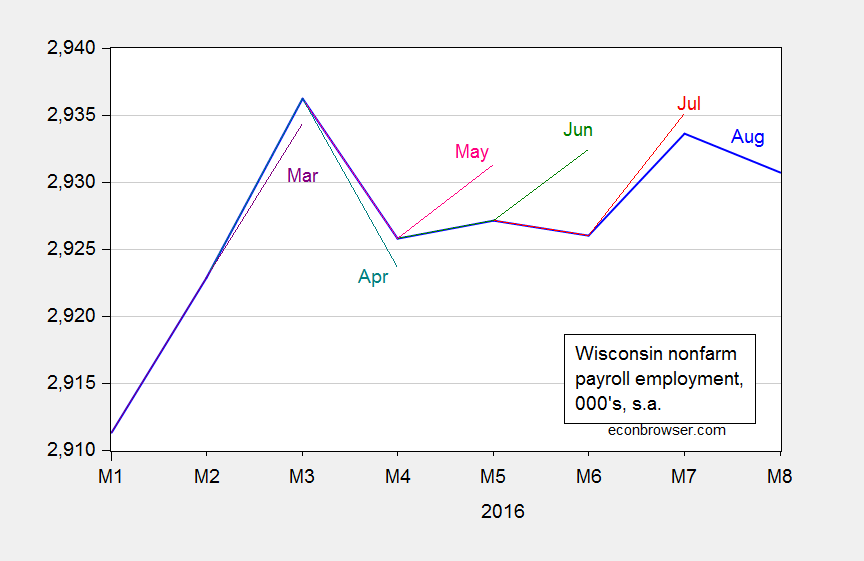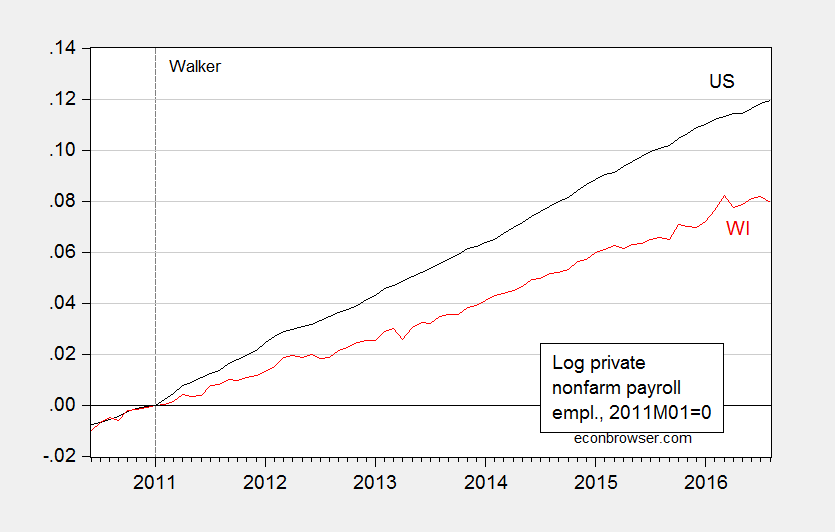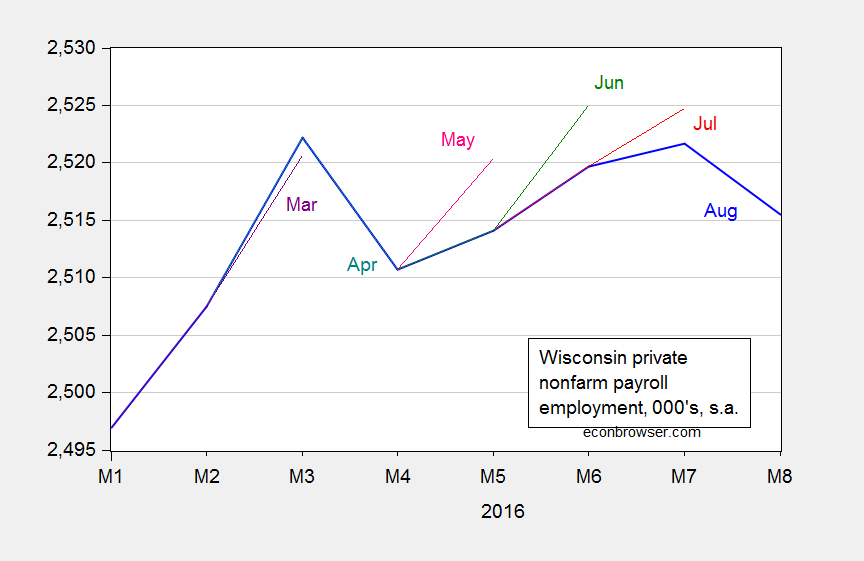Wisconsin DWD release here.
Here’s private nonfarm payroll employment relative to 2011M01.
Figure 1: Log private nonfarm payroll employment for US (black) and WI (red), seasonally adjusted, both normalized to 2011M01=0. Source: BLS, DWD, and author’s calculations.
The gap between Governor Walker’s goal of 250,000 new jobs by January 2015 has grown to 57.1 thousands.
Previous preliminary employment figures over the past three months have been revised downward, for both private and total nonfarm payroll employment.
Figure 2: Wisconsin private nonfarm payroll employment, various vintages, in thousands. Source: BLS, DWD.

Figure 3: Wisconsin nonfarm payroll employment, various vintages, in thousands, s.a. Source: BLS, DWD.
Given the continued growth in US employment, the gap between reported Wisconsin employment and what should have been expected on the basis of historical correlations has probably increased (see this post).
For this, perhaps we can thank the Wisconsin Club for Growth.

Source: HuffPo.


I find this statement from the DWD press release a little confusing: “We also know employers continue to say they can’t find enough skilled workers to fill open positions, which means we need to redouble our focus on finding and training the talent needed to help employers fill those open positions. Employers that have confidence in a robust talent pool in Wisconsin will have more confidence expanding and adding jobs in Wisconsin.”
Is stagnating job creation the result of employers having no confidence in Wisconsin workers?
if there is a problem finding enough skilled workers, there should be a recent rise in wages for those positions? if not, there would seem to be a market failure provided by the employers in this instance.
Somewhere, out there, there is a bar chart showing the percentage point changes in unemployment rates since 2006 and 2011 for all 50 states. I just can’t find it. But if I could, I might be able to draw some conclusions about real employment performance for the individual states rather than basing performance on the promises of politicians since we all know that politicians over-promise and under-deliver… whether they are Scott Walker, Hillary Clinton, or someone else.
Of course then there would be arguments about the external and internal factors which make each state unique. “Yes, but they had new oil discoveries.” “Yes, but a major manufacturer shipped production overseas so company employees and suppliers’ businesses were affected.”
Promises are good only for getting elected, not actually delivering. Most voters either don’t considered issues (locked into a party) or have very short memories when the next distraction hits the news.
After key donations, Wisconsin GOP tried to keep poisoned kids from suing lead makers
http://arstechnica.com/science/2016/09/after-key-donations-gop-tried-to-keep-poisoned-kids-from-suing-lead-makers/
Disturbing turn of events. Pay for play in action by the Wisconsin governor and legislature.